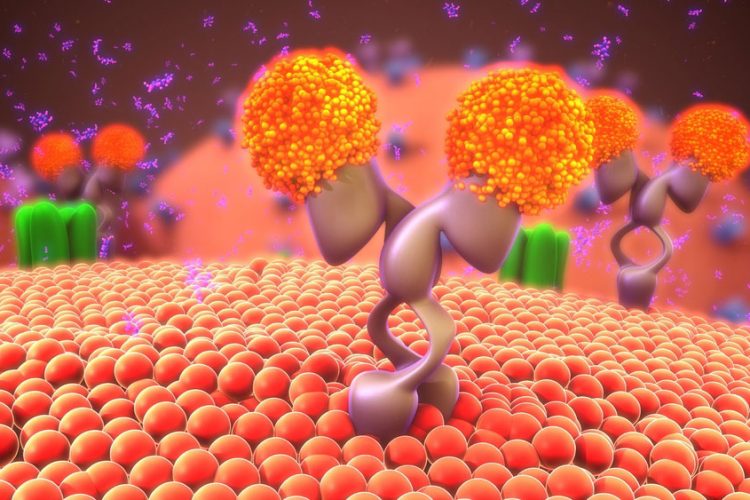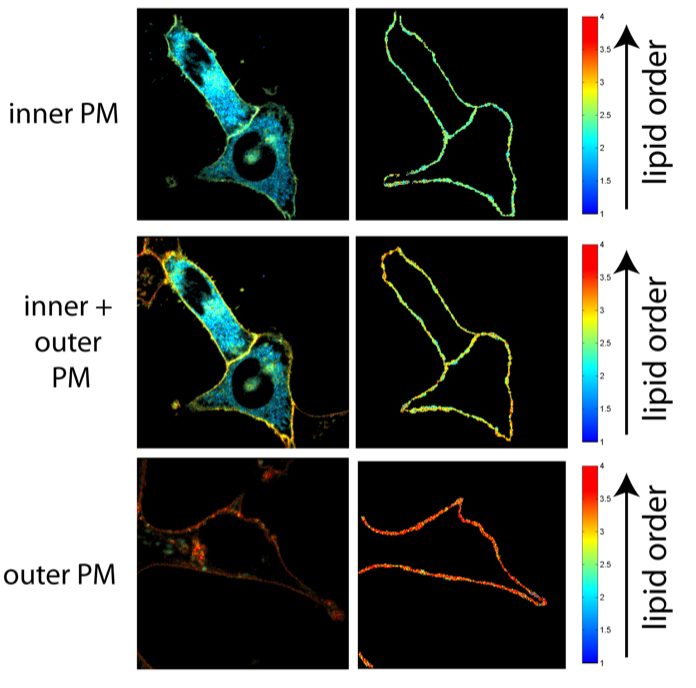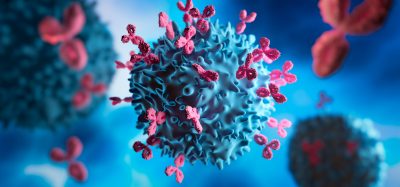Lipid asymmetry plays key role in activating immune cells
Posted: 20 February 2018 | Dr Zara Kassam (Drug Target Review) | No comments yet
Researchers have shown that by preventing loss of membrane asymmetry it’s possible to control the immune response…


A cell’s membrane is its natural barrier between the inside of a cell and the outside world — composed of a double layer (bilayer) of lipids (such as fats, waxes, sterols, or fat-soluble vitamins). Intriguingly, it’s been known for decades that the layer facing the inside of cells is made of different lipids than the outside-facing layer.


A cell’s membrane is composed of a bilayer of lipids, and the inside-facing layer is made of different lipids than the outside-facing layer; the differences in membrane order between the inside and outside bilayer are both obvious and striking. (Joseph Lorent)
This “lipid asymmetry,” or lack of symmetry, is regulated via a variety of proteins and demands a high amount of energy from the cell. Since the cell invests resources toward keeping the lipids asymmetrically distributed equally between the two sides of the bilayer, the process is vital to its function. Dying cells, which permanently lose their lipid asymmetry, are targeted by the immune system for elimination.
Because different lipids create membranes with different physical properties, a group of McGovern Medical School researchers wondered whether different lipid compositions in the bilayer could also lead to different physical properties.
A variety of fluorescent probes can provide insights into the general physical properties of membranes. But these probes tend to stain both sides of the plasma membrane — making it impossible to independently measure the two layers of the bilayer.
“To overcome it, we use a trick where we inject the probe directly inside single cells using a tiny glass syringe like the kind used for extracting nuclei out of cells for cloning,” said Dr Joseph H. Lorent a postdoctoral researcher. “This allows us to visualize specifically half of the membrane facing the [inside of the cell].”
Now the researchers could see the changes between the inside and outside bilayer. “The differences were obvious and striking,” Dr Lorent said. “By preventing the loss of membrane asymmetry, we inhibited the immune response.”
The team found that adjusting the lipid asymmetry of the membrane was important to the immune cells functioning. “In the long run, by knowing how lipid asymmetry is involved in cell signalling, we might be able to ‘tune’ certain immune responses or even cell death through the regulation of lipid asymmetry,” Dr Levental said. “This might involve treatments for allergies, inflammation or possibly even cancer.”
Related topics
Immunology, Lipidomics, Therapeutics
Related organisations
McGovern Medical School
Related people
Dr Joseph H. Lorent








